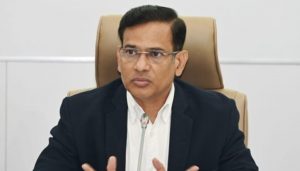Changing times, changing trends: Karvy’s India Wealth Report 2016
Mumbai, December 14, 2016: KARVY Private Wealth, the wealth management arm of the KARVY Group, a leading financial-services conglomerate, launched its 7th edition of India Wealth Report 2016 today. The Report provides an overall perspective of the Wealth held by individual in India and the expected pattern of future investments. Based on extensive research, the report provides the annual buzz on “Wealth” trends for individual investors in India.
Global private financial wealth grew by nearly 5.2% in 2015 to reach a total of $168 trillion (approx. ` 11,250 lakh crore), out of which Asia-Pacific accounted for $37 trillion (approx. `2,500 lakh crore). While India is considered the bright spot among emerging economies, in the short term the economy is bound to slow a bit, given the government’s recent efforts to demonetise old, high-value notes. The victory of Donald Trump in the US presidential elections is also likely to result in some bumps in the road ahead for global markets and accordingly to the Indian market. However, in the long run, India is expected to outshine its emerging market peers, including China, owing to changing positive dynamics, especially the government’s reforms push (the Goods & Services Tax (GST), Real Estate (Regulation and Development) Act and the Bankruptcy Code, among others. Even demonetisation will have a long-term positive impact, as more wealth enters the formal financial system. Thus, we expect savings bank deposits, fixed deposits and small savings schemes to be most sought after investment avenues even for the next year and in the long run, this wealth will eventually find its way into asset classes such as equities, mutual funds, etc. On the other hand, the proportion of investments in physical assets such as gold and real estate will reduce.
In FY16, total wealth held by individuals in India grew by 8.5% to ` 304.2 lakh crore. Investments in financial assets too grew, although at a slower 7.14% to ` 172 lakh crore, mainly dampened by the bleak performance of direct equities. Physical assets grew at a much faster 10.32% to ` 132 lakh crore.





